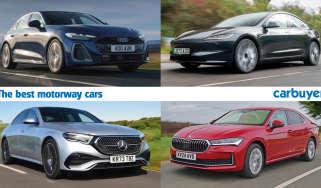Volkswagen up! hatchback - MPG, running costs & CO2 (2012-2023)
The Volkswagen up! promises very low running costs
Low running costs are a top priority for up! drivers and Volkswagen has made sure the up! is very affordable to own. Like the Hyundai i10 and Toyota Aygo, this is a frugal car designed for the city.
The five-door (now standard except on base and GTI versions) is more expensive to buy than the less practical three-door, but the five-door will probably be a little bit easier to sell when the time comes to upgrade. All versions of the up! should benefit from VW’s traditionally strong resale values, too.
Volkswagen up! MPG & CO2
Besides the 113bhp GTI model and the e-up!’s electric motor (both reviewed separately), there is now just one petrol engine to pick. The non-turbocharged 1.0-litre petrol produces 64bhp, returning fuel economy of over 50mpg and CO2 emissions of 100g/km of CO2. All models will cost the standard rate of VED (road tax), apart from the electric version which is exempt.
Insurance
Insuring a VW up! shouldn’t be too much of a stretch, as every standard model falls into the second- or third-lowest insurance group. The electric model is in group 10, while the GTI is in group 17.
Warranty
Volkswagen offers a three-year/60,000-mile warranty on the up!, which is the same as the SEAT Mii is given. It’s significantly less generous than the five-year/unlimited-mileage cover offered on the Hyundai i10, though, nor can it match the seven-year/100,000-mile warranty of the Kia Picanto. The up! also comes with a body protection warranty that guarantees the car against rust for 12 years, plus a three-year paintwork warranty.
Servicing
Maintenance costs should be low. Volkswagen offers fixed-price service plans, which mean regular maintenance of your up! could cost just a few pounds a month. As for service intervals, the up! requires an oil-change service after one year or 10,000 miles, whichever comes first. Then it requires an inspection service at the end of the second year (or 20,000 miles) and then again every year (or 20,000 miles) after that.














